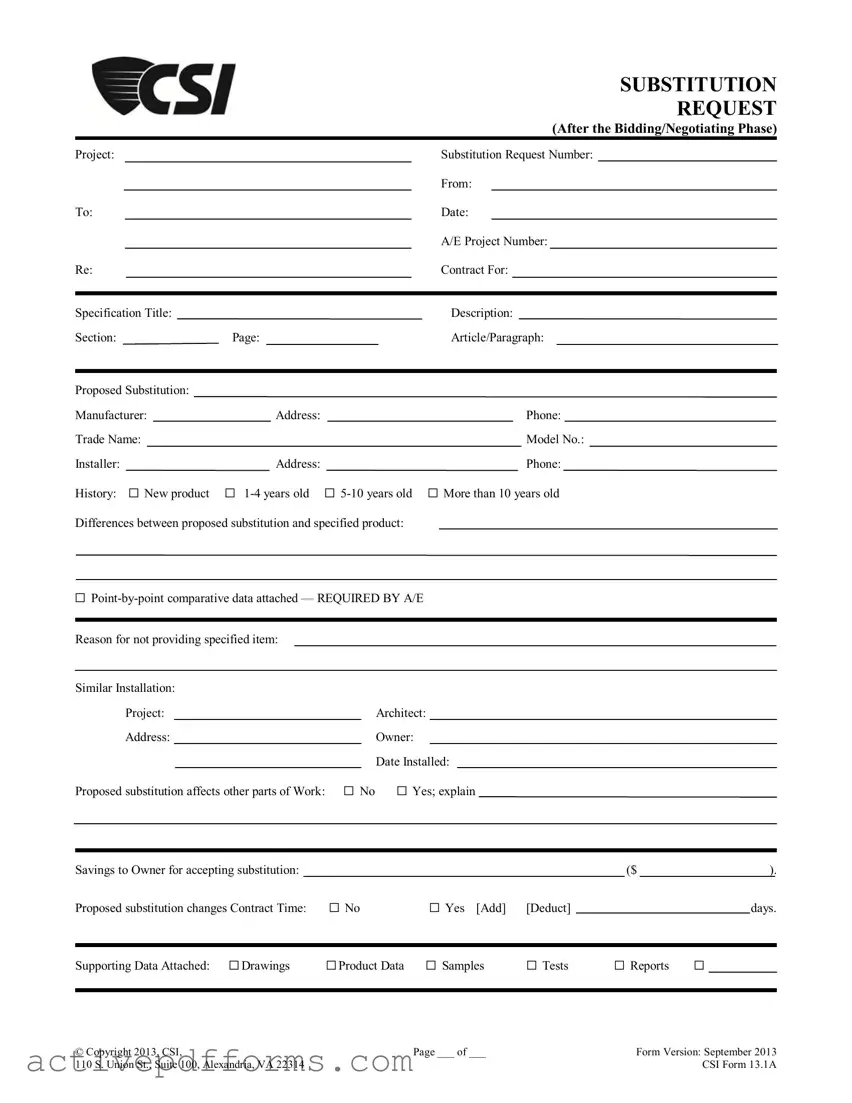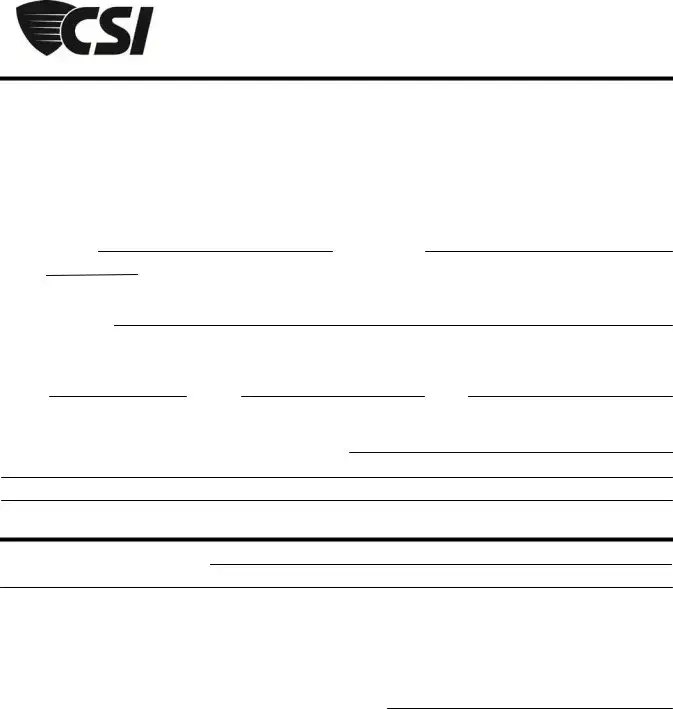When managing construction projects, the fluid nature of the undertaking often requires flexibility and adaptability, especially when it comes to materials and products specified in the initial plans. The Substitution Request (CSI Form 13.1A) plays a critical role in this process, enabling project stakeholders to propose alternative products or materials after the bidding or negotiating phase has concluded. This form serves as a formal request to substitute a specified item for another, detailing essential information such as the project name, request number, and a comprehensive description of the proposed substitution, including the manufacturer, trade name, model number, and installer details. It requires a thorough comparison with the originally specified product, highlighting any differences, and mandates the attachment of comparative data to support the substitution. The form also addresses the history of the proposed product, reasons for the substitution, impact on other work sections, potential savings for the owner, and implications for the project timeline. Moreover, it obliges the requestor to provide supporting documentation such as drawings, product data, and test reports. Conceived by the Construction Specifications Institute (CSI), this document underscores the complexity and collaborative nature of construction projects by bridging communication between architects, engineers, contractors, and owners, ensuring that every substitution is considered carefully with an eye toward quality, efficiency, and project integrity.

